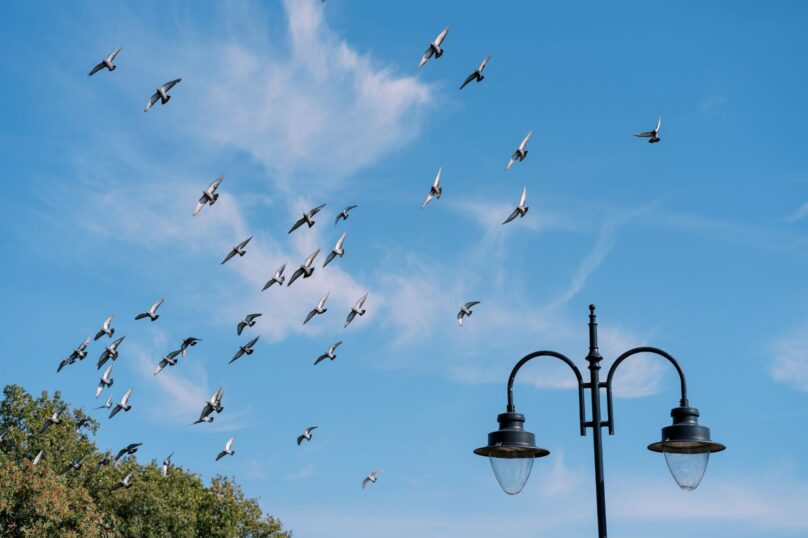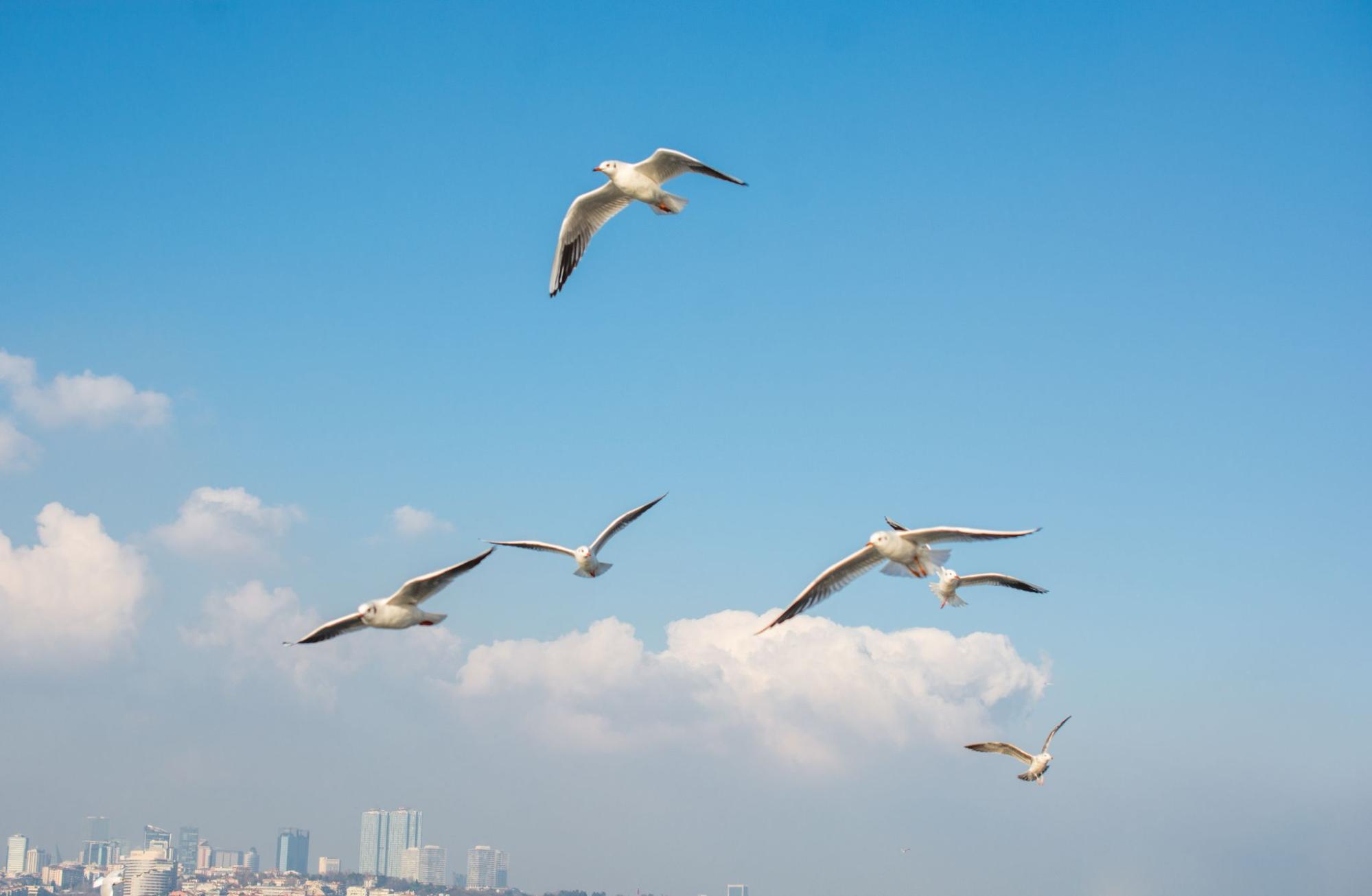
Wildlife intrusions involving birds, raccoons, snakes, bats, or other animals might initially seem like minor disruptions, but attempting to remove them without training and equipment can lead to serious consequences. Handling wild animals on your own risks injury, disease exposure, and property damage while potentially violating wildlife protection laws. These situations often escalate quickly and require professional intervention to ensure the animals’ safety, legal compliance, and humane treatment.
Health and Safety Risks When You Remove Wildlife Yourself
Trying to remove wildlife alone puts both human safety and the well-being of animals at risk. Injuries, infections, and contamination can happen fast without proper training or protective gear. Birds, for example, may suffer stress, injury, or death when mishandled. Rushed bird removal often leads to more danger for everyone involved.
Bites and Scratches from Defensive Animals
Wild animals react aggressively when they feel threatened. They might lunge, scratch, or bite in self-defense without warning. These injuries can become infected quickly, especially without immediate medical care. Some animals carry bacteria that enter the body through even minor wounds. Attempting to remove it increases your chances of getting hurt.
Exposure to Animal-Borne Diseases
Wildlife can carry serious illnesses like rabies, leptospirosis, or salmonella. These diseases are passed through contact with saliva, urine, or droppings. Improper cleanup without protection exposes you to these biohazards. Some infections may take days to show symptoms, but can be life-threatening. Handling animals without training puts your health at serious risk.
Breathing Hazards From Nesting Waste
Droppings and nesting materials release particles that contaminate the air. These particles may contain spores or bacteria that affect the lungs. Breathing in polluted air can lead to infections or respiratory conditions. Long-term exposure inside enclosed spaces increases the danger. Removing wildlife without proper cleaning can worsen indoor air quality.
Dangerous Falls During DIY Attempts
Attempting to reach animals in attics, on roofs, or in tight crawl spaces can lead to falls. Balancing on ladders or walking on unstable surfaces increases the chance of injury. Most people don’t have the safety equipment that professionals use. One slip can cause fractures, head trauma, or worse. Climbing without training or tools puts your safety at risk.
Injury or Death to the Animal
Handling birds or wildlife without proper experience can cause extreme stress to the animal. Improper traps can break wings or cause suffocation. Baby animals may be separated from their parents and left to die. Untrained removals often cause more suffering than relief. Humane removal is only possible with the right tools and knowledge.
Legal and Ethical Issues If You Remove Wildlife Yourself
Removing wildlife without proper knowledge or authorization can quickly lead to legal trouble and ethical concerns. Many species are protected by laws that regulate their handling, relocation, and treatment. Untrained attempts often result in unintentional harm to the animal or violation of local regulations. These actions risk fines and damage your reputation as a property owner:
Violating Wildlife Protection Laws
Most regions have laws that protect specific birds, mammals, and other species. Taking action without the correct permits can result in fines or legal charges. Many people are unaware that even attempting to trap or relocate certain animals is regulated. Ignorance of the law does not excuse the violation.
Improper Relocation Methods
Wildlife that is relocated without proper planning may not survive in its new environment. Animals in unfamiliar environments often face dehydration, starvation, or conflict with other wildlife. If they are not moved far enough, they may return to the original property. To succeed, relocation must follow safe and humane guidelines.
Harm to Offspring or Nests
Adult animals are often removed while their young are still hidden in the nest. This leads to orphaned offspring that are unable to survive on their own. Inexperienced individuals may unknowingly leave babies behind to die slowly. These actions cause unnecessary suffering and violate humane standards of care.
Use of Inhumane Traps or Chemicals
Unapproved traps or chemicals can result in prolonged suffering or painful death. Many of these methods are illegal for public use due to the harm they cause. Animals caught this way are often injured or killed inhumanely. Professionals are required to follow ethical standards for removal.
Lack of Knowledge in Species-Specific Laws
Some species are protected at the federal or state level, even if they appear familiar. Untrained removers may not recognize a protected animal and take illegal action. Each species has different handling and relocation rules that must be followed. Without proper training, it’s easy to make costly legal mistakes.

How DIY Attempts to Remove Wildlife Make Things Worse
DIY removal often creates more serious problems than it solves. Property owners can cause damage, trap animals in hidden areas, or worsen the infestation without the right approach. Many assume they’re solving the issue, but the risks multiply after failed attempts. These mistakes lead to higher costs, unnecessary suffering, and unsafe living conditions:
Making Animals Harder to Remove
Improper attempts to scare or flush out wildlife usually force them deeper into the structure. They retreat into tight areas that are harder to access and more dangerous to navigate. This makes removal longer, more complicated, and more expensive in the long run. What starts as a quick fix ends up increasing the workload for professionals.
Using Ineffective or Unsafe Products
Many repellents sold in stores are ineffective and unsafe for indoor use. These products often contain chemicals that put children and pets at risk. They can also cause wildlife to panic, increasing the chances of injury or damage. Using these items can give a false sense of control without actually solving the problem.
Leaving Baby Animals Behind
Untrained removers often fail to notice nests or hidden young. When the adult is removed, the babies are left behind with no way to survive. Their slow death creates a heartbreaking situation and serious hygiene issues. Wildlife removal specialists always inspect thoroughly to avoid this outcome.
Causing Repeat Infestations
DIY efforts usually miss what attracted the wildlife in the first place. Food sources, shelter, or access points remain open and unaddressed. Animals quickly return if nothing is done to prevent it in the long term. Professionals seal entry points and give prevention tips to avoid a second invasion.
Long-Term Damage Caused by Improper Wildlife Removal
DIY wildlife removal often creates problems that persist long after the animal is gone. Damage to insulation, wiring, or structural areas can go unnoticed until it becomes costly. Poor handling methods leave behind waste, entry points, and nesting material that continue to impact safety and hygiene. Long-term consequences are common when animals aren’t removed properly, and the area isn’t secured afterward.
Structural and Property Damage Gets Worse
Animals confined to small spaces can damage insulation, pipes, and drywall. They chew through wires, dig into walls, or rip apart stored materials. Moisture and droppings left behind create mold growth and rot. What starts as minor damage can quietly grow into a major repair project.
Odors and Contamination Linger for Weeks
Dead animals or leftover waste leave powerful smells that don’t fade quickly. These odors seep into walls, air vents, and insulation materials. Even after removal, the smell can stay unless deep cleaning is done. The longer it’s ignored, the more complicated and expensive it becomes.
Health Hazards Build Over Time
Feces, urine, and nesting debris contain bacteria and parasites. These remain dangerous long after the animal is gone, especially in warm or enclosed spaces. Over time, they contaminate surfaces and release particles into the air. Without full sanitization, these hazards put everyone in the property at risk.
Entry Points Are Left Open
DIY removals often miss the exact spots where animals got inside. Gaps in roofing, vents, or siding stay exposed without proper sealing, inviting new animals to move in shortly after the first are removed. Without closing these gaps, the cycle never ends.
Repeat Infestations Cost More Each Time
Each new animal that enters adds more damage and risk to the property. As infestations recur, repair costs escalate, and health risks intensify. DIY methods don’t solve the root causes, so the problem keeps returning. Professional exclusion and inspection are the only ways to stop the pattern for good.
Hiring Experts for Safe and Humane Wildlife Removal
Letting professionals handle wildlife removal protects your property, health, and the animal involved. Experts are trained to identify the species, locate nests, and safely remove animals using approved techniques. They understand legal requirements, apply humane methods, and prevent long-term damage with thorough inspections. Hiring a professional ensures the situation is resolved the right way from the start.
Correct Identification Prevents Mistakes
Many property owners misidentify the species they’re dealing with, leading to wrong removal methods that put both the person and animal at risk. Professionals assess the situation and identify the exact type of wildlife involved. Knowing the species ensures the most effective and legal approach is used.
Safe Handling Protects Everyone
Wildlife experts use safety gear and tools designed for humane capture. They know how to prevent injuries, contamination, or accidents during removal. Trained handlers reduce the risk of aggression or panic from the animal. Their methods keep you, your family, and the animal safe from harm.
Legal Compliance Avoids Penalties
Licensed professionals follow local, state, and federal laws for wildlife removal. They know which permits are required and what rules apply to protected species. Hiring a pro keeps you in full legal compliance and avoids costly fines. Legal removal also supports the ethical treatment of the animals involved.
Full Cleanup and Prevention Included
Professionals don’t just remove the animal—they clean contaminated areas and seal entry points, which prevents odors, disease risks, and future infestations. Their process also includes assessing the damage and recommending repairs. Many companies also offer follow-up services to ensure long-term protection.
One Service Solves the Whole Problem
DIY removal usually ends up being the first of many attempts. Professionals handle everything from inspection to cleanup in one visit. Fully resolving the issue saves time, money, and stress. A complete job means no more surprises after the animal is gone.
Let the Experts Remove Wildlife the Right Way
Removing wildlife without proper training leads to unnecessary risks, lasting property damage, and potential legal issues. Experts use proven techniques to safely handle animals, protect your home, and prevent future invasions. Their expertise ensures humane treatment, thorough cleanup, and full compliance with all relevant regulations. Trusting professionals from the start saves you time, avoids complications, and keeps everyone, including the animals, out of harm’s way.
Learn why removing wildlife on your own is never safe and how bird control services can help by visiting Elite Bird Management’s blog.




